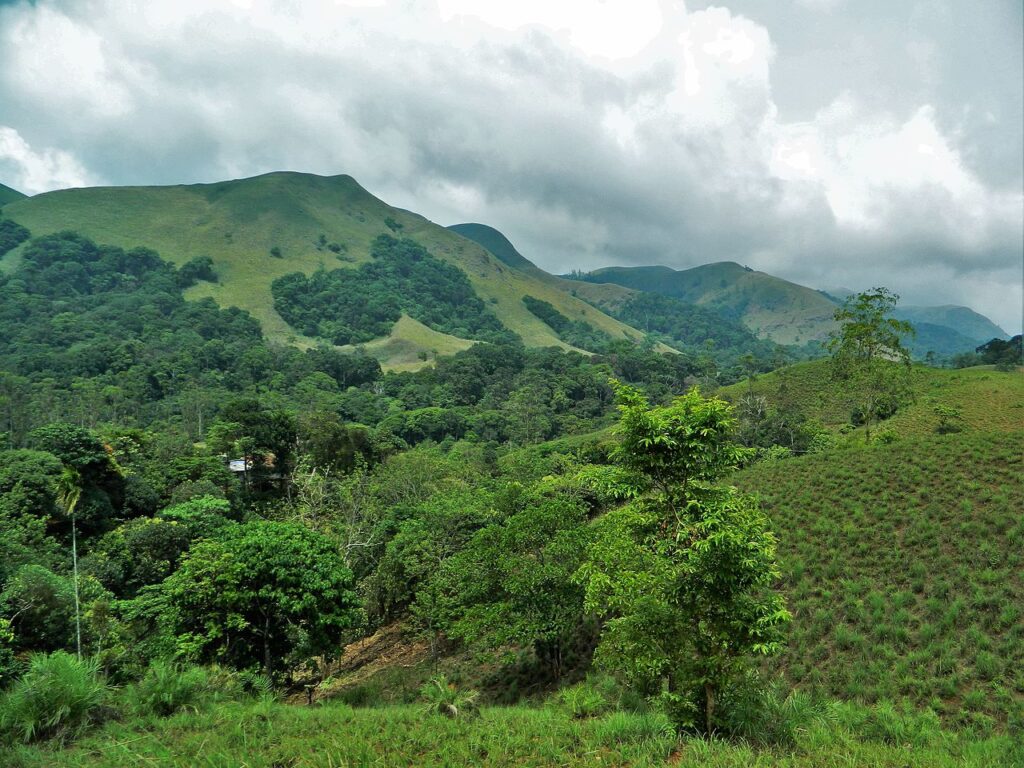Fruit-Based Agroforestry Systems are a novel and environmentally friendly farming method that mixes fruit tree development with other agricultural practises. These systems combine the advantages of fruit trees, such as nutritious fruits, shade, and wood, with the production of other crops or livestock. The idea is to create a harmonic environment in which fruit trees coexist with companion plants, therefore increasing biodiversity and total production.
Furthermore, agroforestry systems based on fruits not only contribute to food security but also provide several environmental benefits such as better soil fertility, water conservation, and carbon sequestration. Additionally, by diversifying revenue streams and boosting local markets, these systems provide economic alternatives for farmers. As we learn more about fruit-based agroforestry, we discover its promise for sustainable agriculture and a greener future.
Types of Fruit Trees in Agroforestry
Fruit trees of various sorts play an important part in creating a diversified and sustainable food production environment in agroforestry systems. Moreover, these fruit trees not only provide tasty and healthy fruits, but they also benefit the broader environment. Citrus trees like oranges, lemons, and grapefruits, as well as tropical fruits like mangoes, bananas, and papayas, are popular types of fruit trees seen in agroforestry.
Furthermore, in appropriate regions, temperate fruit trees such as apples, pears, and cherries are also incorporated into agroforestry systems. Specifically, each fruit tree adds richness and variety to the agricultural environment with its distinct traits, growth patterns, and harvest seasons. The presence of several fruit tree species increases biodiversity, attracts pollinators, and promotes a resilient and sustainable environment.
Benefits and Importance of Fruit-Based Agroforestry Systems
Fruit-based agroforestry systems provide several benefits and play an important role in sustainable agriculture. For example, these systems promote ecological balance by increasing biodiversity and creating homes for a diverse range of animals. Fruit trees in agroforestry not only provide a variety of food supplies but also provide habitat for pollinators and beneficial insects, promoting natural pest management.
Furthermore, by fixing nitrogen, increasing soil structure, and avoiding erosion, fruit trees contribute to soil fertility and nutrient cycling. Long-term, this leads to better soils and improved productivity.
Fruit-based agroforestry systems provide several revenue sources. Farmers can sell the fruits locally or in marketplaces, offering a major source of income. Furthermore, these systems provide prospects for value-added goods such as jams, jellies, and juices. Fruit trees are vital in the face of climate change. They operate as carbon sinks, removing carbon dioxide from the atmosphere and minimising the effects of climate change. Fruit trees provide shade, which helps control temperature and reduce evaporation, boosting water availability and drought resilience.
Enhanced Biodiversity and Habitat Creation
Fruit-based agroforestry systems are critical for increasing biodiversity and providing a diversified habitat for numerous plant and animal species. By incorporating fruit trees into agricultural landscapes, these systems create ecological balance and a sustainable environment. Fruit trees attract a diverse range of pollinators, including bees, butterflies, and birds, facilitating effective cross-pollination and fruit set. This, in turn, promotes the growth of many plant species and the establishment of beneficial microbes in the soil.
Furthermore, the canopy structure of fruit trees provides cover and nesting locations for birds, small animals, and insects, enhancing the ecosystem even further. The leaf litter and fallen fruits serve as natural food supplies for a variety of creatures, maintaining the complete food web. Fruit-based agroforestry systems exhibit their ability to support biodiversity conservation and generate sustainable homes for a wide range of species in this symbiotic connection, contributing to the general health and resilience of the ecosystem.
Economic Opportunities of of Fruit-Based Agroforestry Systems
Fruit-based agroforestry systems provide farmers with attractive economic options and revenue-creation chances. Farmers may diversify their revenue streams and achieve long-term economic success by including fruit-bearing trees in their agricultural practises.
To begin with, fruit trees produce excellent harvests, generating continuous income through fruit sales in local marketplaces or to processors. Furthermore, fruits are in great demand in both domestic and foreign markets, increasing export potential and revenues. Second, agroforestry systems promote the production of byproducts such as jams, juices, and dried fruits, which may be sold at higher prices and so increase profitability.
Furthermore, the agroforestry strategy allows for intercropping of annual crops, which provides additional revenue before fruit trees mature. Furthermore, tree-based practises frequently increase the market value of the entire land, providing farmers with long-term economic benefits.

Case Studies
Bellow, Hudson, and Nair (2008) investigated fruit-tree-based agroforestry systems in low-intensity home gardens in northwest Guatemala. These systems, which include apple, peach, and pear trees, have the potential to benefit resource-constrained farmers. Adoption is more likely in reasonably rich households with bigger land holdings, but increased productivity is critical among smaller landholders. Food shortages, fruit quality, and market infrastructure are all constraints. Complementarity with maize crops, household fruit consumption, and additional revenue creation on restricted land are all factors that favour adoption.
Southeast Asia’s unsustainable upland farming poses a hazard to food security and the environment. Agroforestry as a sustainable land management approach was investigated in research conducted in northwest Vietnam. The yearly revenue of fruit tree-based agroforestry systems was higher than that of single cropping, with longan-maize-forage grass and son tra-forage grass systems outperforming sole cropping. Agroforestry improves ecosystem services and weather resilience. It is critical to use seasonal and fast-growing plants for speedy results. Incentives, information exchange, and market connections are required to encourage greater adoption (Hung et al. 2020).
Help us Help Them! Think Wildlife Foundation is a non profit organization with various conservation initiatives. Our most prominent campaign is our Caring for Pari intiative. Pari is a rehabilitated elephant at the Wildlife SoS Hospital. 25% of the profits from our store are donated to the elephant hospital for Pari. Other than buying our wonderful merchandise, you could donate directly to our Caring For Pari fundraiser.
Written by: Aman Thapar
